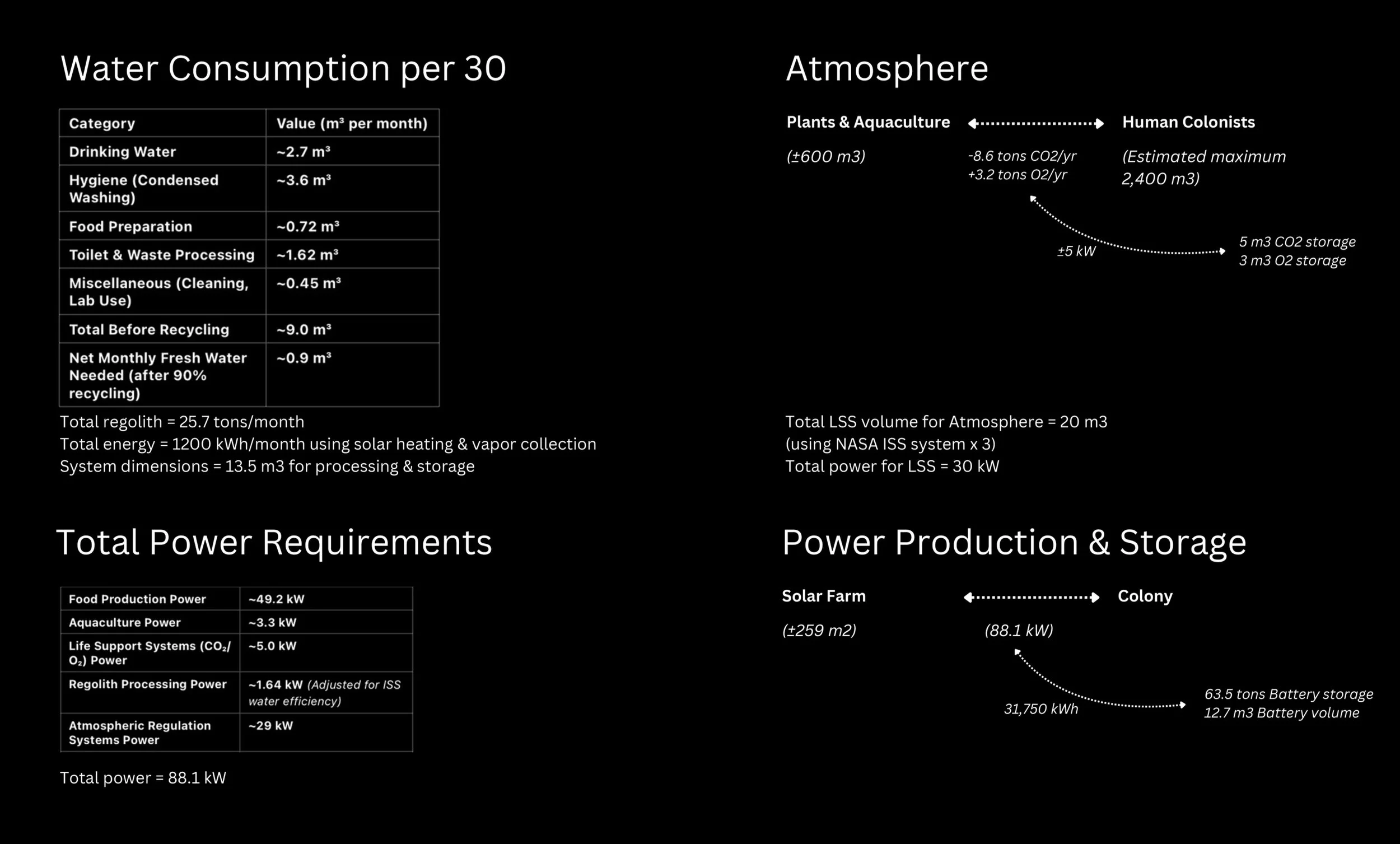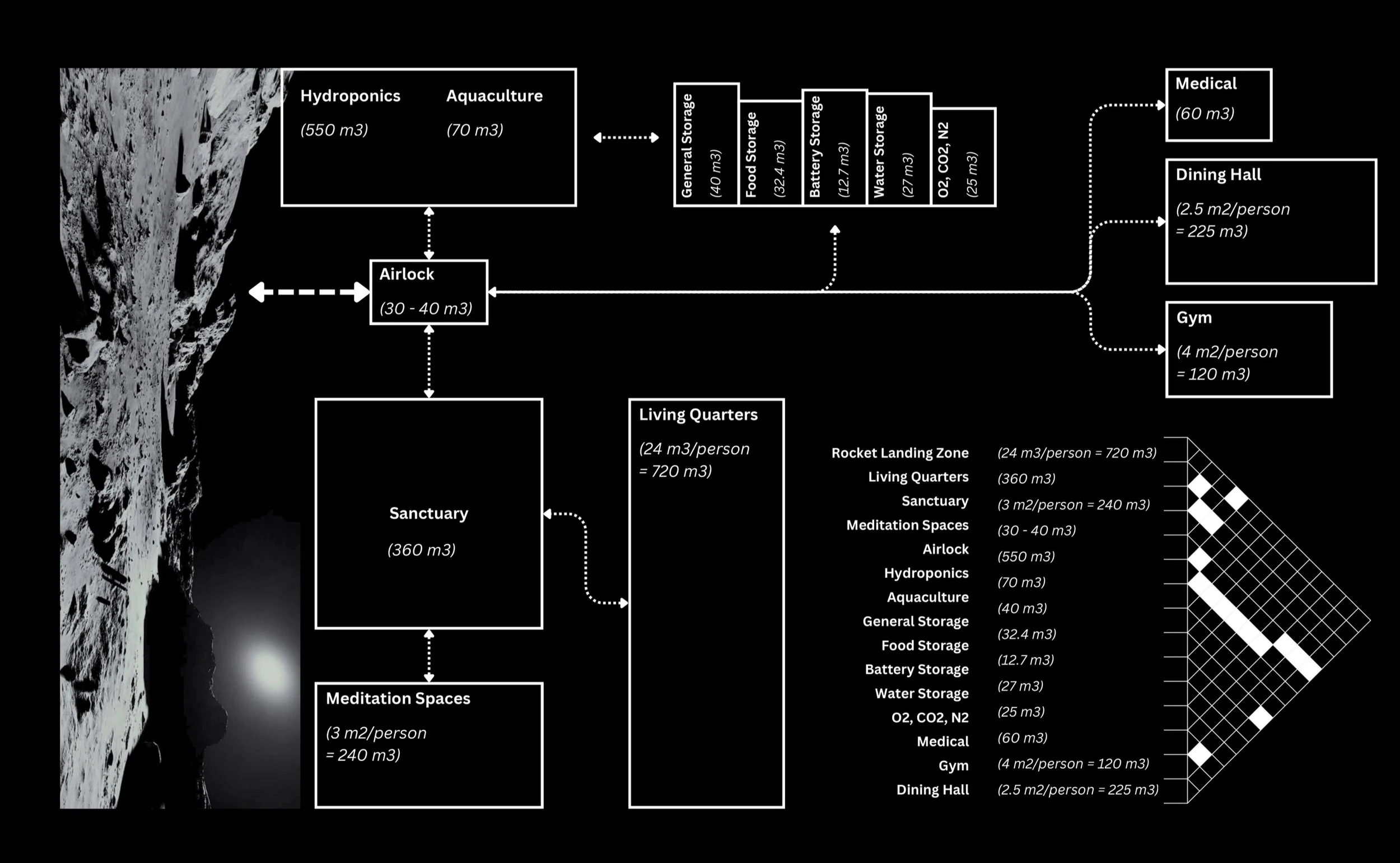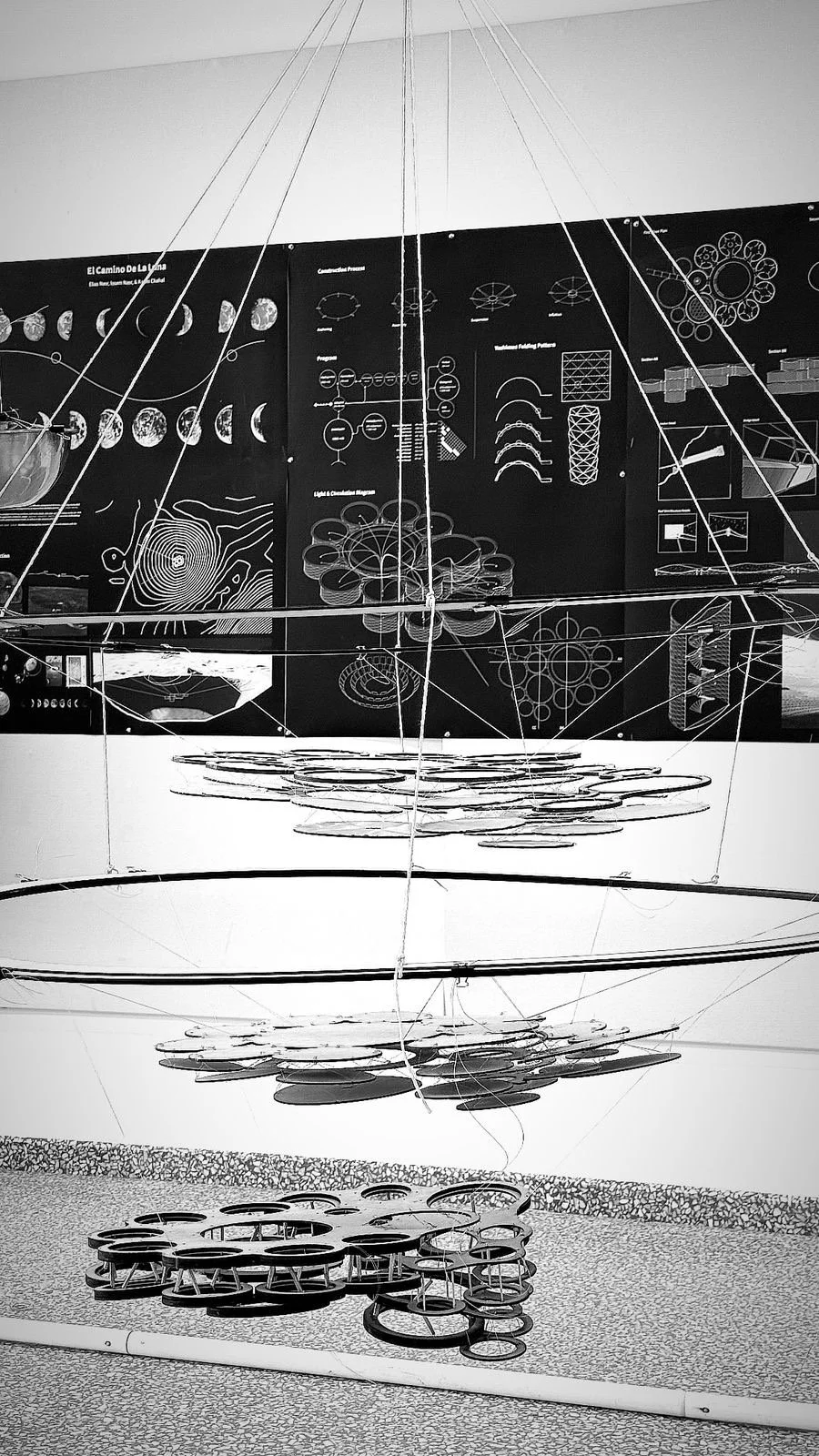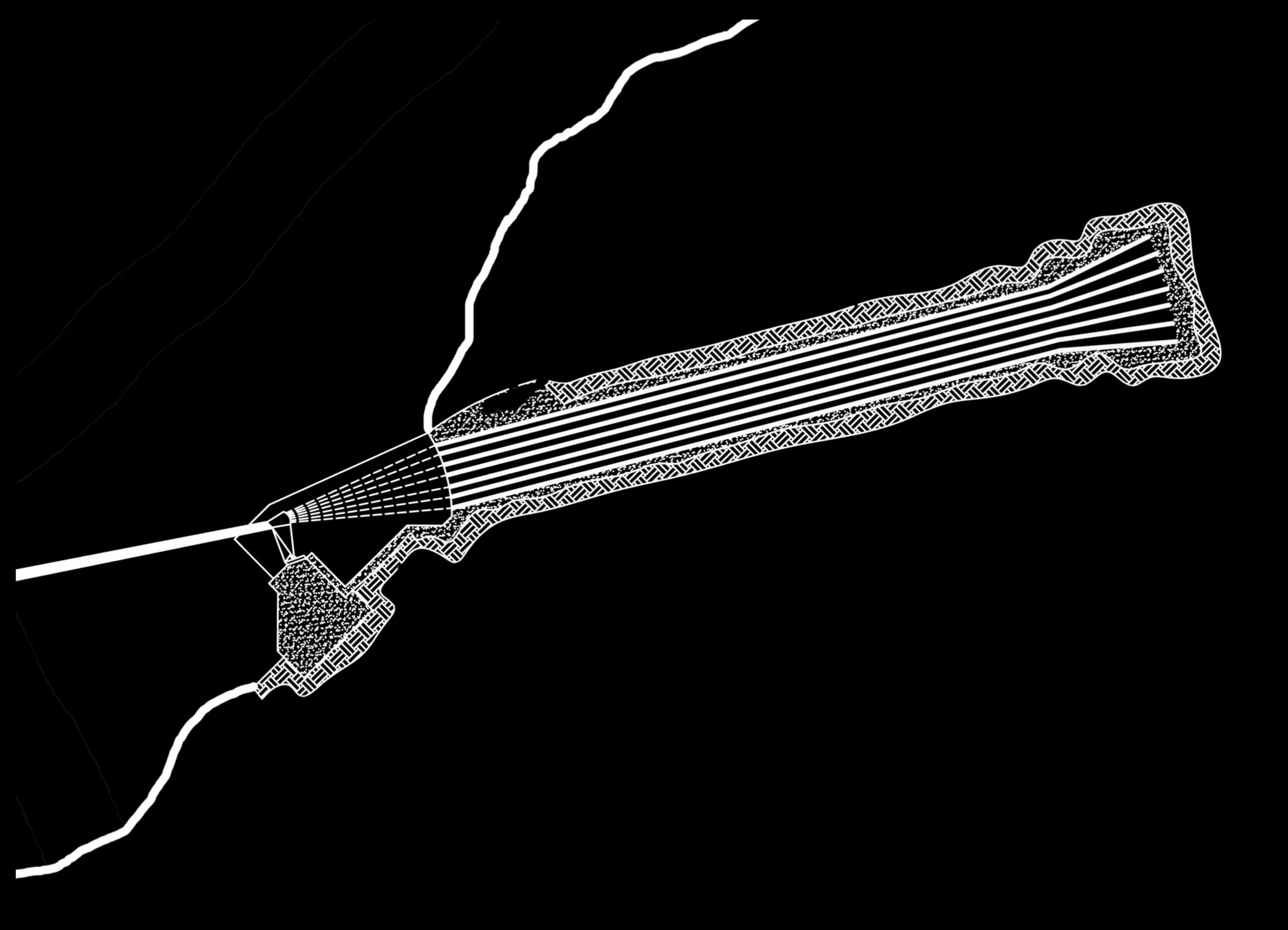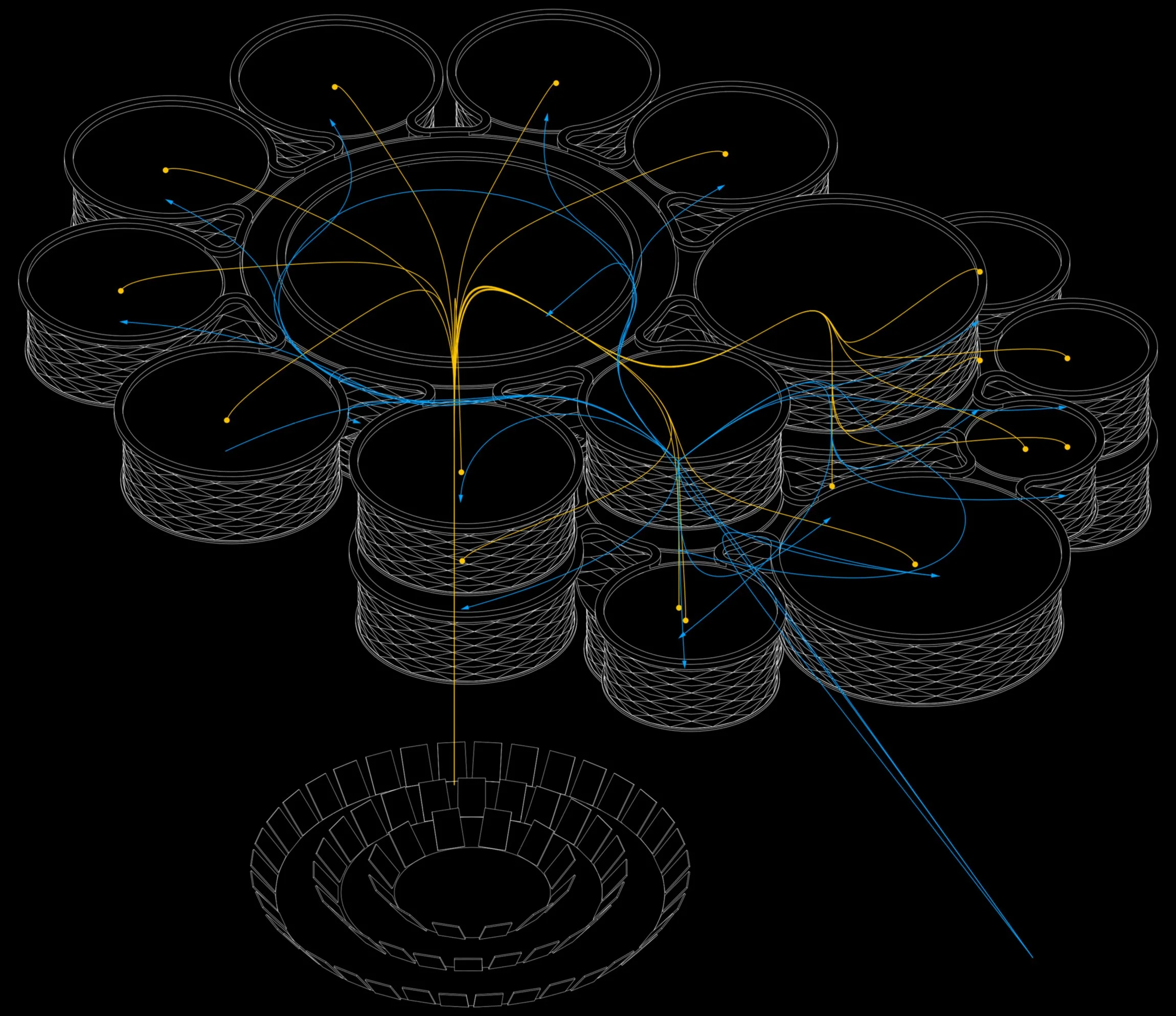Vertical Studio I
The studio aims to explore lunar habitation through asking core questions like why, who, and how. The exploration follows philosophical, technical, then design steps. Each step informs the other, creating a cohesive, well-founded project.
Project Description
With the use of lightweight suspension structures, simple assembly-installation-operation construction methodology was enabled, using a nearly completely self-sustaining habitat model, as well as in-situ resource utilization. Reflection on personal, social, cultural identities is encouraged by mixtures of spaces and relations with the environment.
The studio, Vertical Design I: Moonception, began with identifying solid philosophical foundations for moonworthy missions. Then, explored research on life systems, environmental factors, and existing technology for framing and tethering the following to a proper understanding of scientific knowledge and achievement. With a firm foothold achieved, students began explorations in form, structure, and function, leading to the development of the complete concept.
Why go to the Moon? Our Mission is to establish a lunar pilgrimage for identity reflection and personal discovery, providing young adult philosophers, artists, and writers—true trailblazers of thought—with the opportunity to explore their individual identities and the shared human identity. Design considerations entailed maintaining synchrony with lunar, terran, and solar cycles in relation to the site. This allowed for the dynamic interplay of natural light, darkness, and the respective senses of isolation and connection, creating the desired experiential qualities.
The research conducted led the group to realize the importance of volume—rather than area—and the reorganization of values on the Moon as opposed to Earth. Atmosphere, water, food, and energy gain far more value, as they are necessary for life. However, in order to create seamless and frictionless existence, conducive for reflection, the design of the habitat enabled nearly completely self-sustenance of the habitat. The site had to be a crater with a diameter less than one kilometer and near the equator. The site had to be near a natural water source. And the habitat had to take into consideration volume and energy as a commodity and not as granted living standards.
The research conducted led the group to realize the importance of volume—rather than area—and the reorganization of values on the Moon as opposed to Earth. Atmosphere, water, food, and energy gain far more value, as they are necessary for life. However, in order to create seamless and frictionless existence, conducive for reflection, the design of the habitat enabled nearly completely self-sustenance of the habitat. The site had to be a crater with a diameter less than one kilometer and near the equator. The site had to be near a natural water source. And the habitat had to take into consideration volume and energy as a commodity and not as granted living standards.
The explorations of structure followed a series of suspension systems. Beginning with rubber band explorations, feeding onto hyperboloid tension systems, and landing on collapsible cylindrical modules. Materials envisioned were lightweight aluminum structures, suspended and anchored to the crater rim via woven Kevlar cables, and allowing simple inflation of an outer origami skin of fabric similar to that of top-notch EVA space suits. The roof and floor were composed of pouches of lunar regolith in light fabric layers for radiation and micrometeorite protection required for safe inhabitation of the lunar surface. Moreover, exploration of lenses and optics led to the selection of fresnel lenses to collect light in the crater basin (as a receiver) and redirect light throughout the habitat (as an antenna). Fiber optic cables were used within the habitat to allow for “photo-ducting” and transportation of natural light throughout the habitat in order to minimize relyance of LED synthetic lighting. The exploration reached a cluster of modulated habitats of different diameters, joined with proper circulatory functions. Main spaces were a sanctuary for reflections, hydroponic and aquaponic facilities, and living quarters, as well as tertiary facilities for necessary functions. In finality, the habitat is able to sustain 20 pilgrims and 10 technicians with ~30 day cycles of inhabitation.
This creates an architecture specific to the Moon and ideal for the Moon. Accounting for purpose, shifts in values, and ideal forms, the structure informed function and was informed by the site, creating the seamless architectural features of El Camino de la Luna.
The Identity Crisis
People don’t know who they are.
They don’t feel deeply connected to others.
They don’t feel rooted in meaningful traditions or cultures.
Our mission is to establish a lunar pilgrimage for identity reflection and personal discovery, providing young adult philosophers, artists, and writers, with the opportunity to explore their identities and the shared human identity.
Why the moon?
Detachment from earth’s influence.
Perspective on earth as a distant object.
Blank slate for personal reinvention.
Physically and mentally transformative experience.
Symbol of rebirth.
Phases
The phases of the Moon, as seen from Earth, occur due to the relative positions of the Sun, Earth, and Moon. As the Moon orbits the Earth, the portion of its surface illuminated by the Sun changes, creating phases that range from new moon (when the Moon is between Earth and Sun) to full moon (when Earth is between the Sun and Moon). These changes follow a predictable cycle of roughly 29.5 days and are visible from Earth as crescents, quarters, gibbous shapes, and the full moon. The near side of the Moon always faces Earth due to tidal locking, so we always see the same face, but lit differently depending on the phase.The phases of the Moon, as seen from Earth, occur due to the relative positions of the Sun, Earth, and Moon. As the Moon orbits the Earth, the portion of its surface illuminated by the Sun changes, creating phases that range from new moon (when the Moon is between Earth and Sun) to full moon (when Earth is between the Sun and Moon).
These changes follow a predictable cycle of roughly 29.5 days and are visible from Earth as crescents, quarters, gibbous shapes, and the full moon. The near side of the Moon always faces Earth due to tidal locking, so we always see the same face, but lit differently depending on the phase.
From the near side of the Moon, Earth appears almost stationary in the sky—hovering in roughly the same position due to that same tidal locking. However, Earth goes through phases too, opposite to those seen from Earth. When Earth observers see a full moon, a Moon observer sees a “new Earth” (Earth’s night side), and when it’s a new moon on Earth, the Moon’s near side sees a “full Earth.” Earth also appears much larger and brighter in the lunar sky than the Moon does from Earth, and it even rotates once every 24 hours, showing its continents and weather systems in slow motion. This creates a visually striking and inverse relationship between the Earth and Moon’s illumination cycles.
The site is located on the near side of the moon. The coordinates for Sulpicius Gallus crater are 19.63° North and 11.68° East. Beside it is a carter 200 meters in diameter, and 80 meters in depth. That is the sit.e
The two primary components of a radio telescope are the receiver and antenna.
Inspired Structure
The habitat uses the naturally occurring crater as a receiver, whereas the habitat itself poses as the antenna.
Habitat Program
The Research
After completing the philosophical and inspirational explorations, research was conducted on environmental factors, existing in-situ resource utilization technology (ISRU), life support systems (LSS), extravehicular activity (EVA) equipment, and material technologies.
The research focused on extrapolating volume, energy, and resource requirements of the necessary systems in order to inform the architectural design.
The Essentials
Lunar life differs drastically from life on Earth. Design of the habitat and envisioning of the mission must take into consideration the essentials of sustaining, protecting, and propagating life:
Volume (pressurized and regulated)
Energy
Water (potable)
Calories (consumable and nutritious)
Shielding from radiation, temperature, and micrometeorites
The Values
While the essentials sustain life, they are not enough to allow human to thrive. The habitat must also translate the must-haves for human well-being. The habitat must cater to physical exercise needs, medical care, social support and community, and personal well being.
Suspended Hyperboloid
Suspended hyperboloid structures were envisioned to create variable volume-supporting structures.
Modulated Structure
Adapted from the hyperboloid, the module operates on a dual-ring system that compresses when tensed.
Joining Modules
Joining modules and adapting sizes to support functions allows for the creation of a complete habitat.
Placing in Context
It is suspended above a crater via Kevlar cables, and accessed vis rope bridge.
Yoshimura
The Yoshimura is an origami folding pattern that enables a flat surface to compress and expand along a single axis (here vertical). It allows this motion without need for rotation or elasticity. This enables the models to support variable volume depending on occupancy.
Access
The habitat is accessed via rope bridge.

Bridge Section

Bridge Perspective

Bridge Plan

Top View

Floor Plan 1 Shows the bridge connecting to the main circulation module. The module feeds into the main sanctuary volume which provides circumferential circulation to all living quarter modules.

Floor Plan 2 This floor is accessed via vertical circulation module and houses all service functions in addition to hydroponic vertical farming unit.

Floor Plan 3 This the bottom-most floor and contains only the aquaponic module and storage units.
The habitat is suspended by anchoring the cables in the crater ridge via tieback anchors.
The stairwell houses a helical staircase across three floors.
The double height of the sanctuary is catered to by two collapsible curved staircases.
This axonometric diagram displays the circulation path of people in blue, and that of light projected from the reflector-lined crater in yellow.
The circulation follows simple distribution stemming from the vertical circulation module and feeding into all three levels at core modules.
The light enters the habitat from the bottom of the sanctuary and spreads into each individual room via fiber-optic cable networks running through the roofs of the habitat.
The roof provides the primary suspended structure, which allows the skin and remainder of the habitat to be suspended from it. The roof is composed of aluminum profiles which form the primary structure. From that, is attached a double skin of fabric, which supports lunar regolith as a primary shield from radiation and micrometeorites.








